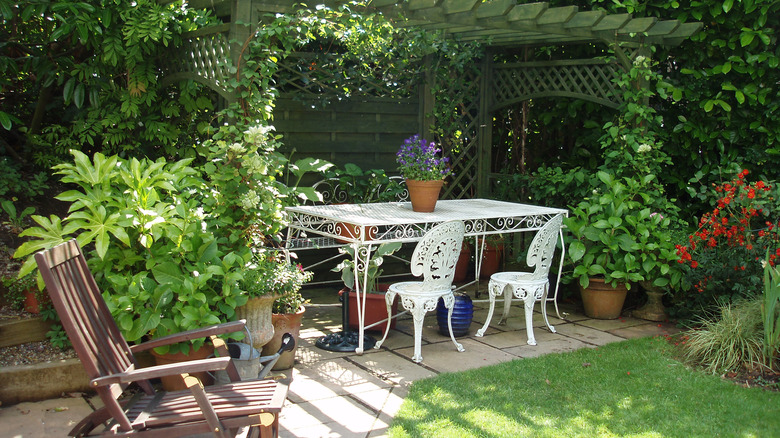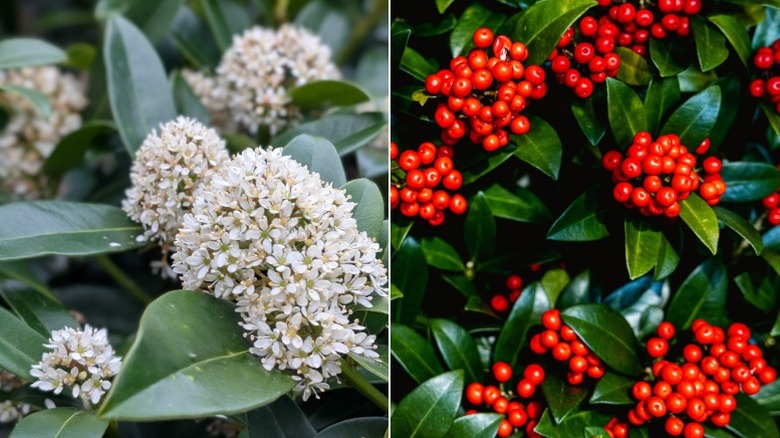The Deer-Resistant Plant That Thrives In A Shady Corner Of Your Yard
When confronted with shady corners in your yard, it can often be difficult to find plants that will thrive and look great too, even though you might be fully aware of essential tips for growing a flourishing shade garden. It can be even more challenging to find just the right species that not only flowers in dense shade but also provides some year-round color in the form of fall and winter berries. One such plant is the Japanese skimmia (Skimmia japonica), which can be grown in USDA hardiness zones 7 through 8. What's even better is that this evergreen shrub is also deer-resistant, so you won't have to worry about it being decimated by visiting wildlife, even though you might already be using a few natural ingredients that can repel deer from your yard and garden.
Japanese skimmia is a dense, slow-growing shrub that can reach a height of 7 feet, with a spread of about 5 feet. It has dark green, leathery leaves and small white flowers that are scented. These are followed by eye-catching, bright red berries in the fall. Just be aware that these berries are toxic to humans, so take care if you have children.
It's also important to note that this plant does appear on the Mid-Atlantic Invasive Plant List, so check with your local municipality before planting it in your garden. However, it is listed as a non-invasive alternative to wintercreeper (Euonymus fortunei) by the Cornell University Cooperative Extension of Suffolk County.
How to grow Japanese skimmia in that shady corner of your yard
Once you've planted this species in your garden, it doesn't really need much care. Just make sure it doesn't receive any direct afternoon sun because this will scorch the leaves. Skimmia does like an acidic soil that's rich in organic matter, but this should be well-drained. It's also interesting to note that it's only the female plant that produces the red berries, and the blooms require a male plant nearby for pollination. So, if you don't want to stress about the toxic berries, stick to growing just a male plant, which actually has larger flowers.
You could also consider growing this species as a small hedge in that large, shady part of your yard. It's recommended that you plant at least one male plant for every six female ones if you want those vibrant and colorful red berries.
Or, for an alternative that has self-fertile flowers, you could consider Reeves skimmia (Skimmia reevesiana), which grows to a height and spread of only around 3 feet. The berries on this species are also toxic. Another attractive cultivar is Skimmia japonica 'Rubella,' which is a male plant that has dark red flower buds throughout the fall and winter. These open in spring for a pretty display of blooms. Although pruning is not necessary, you can give it a light trim after it's finished flowering. To add even more interest to your landscape, you might want to explore some ground cover plants that also love shade.

